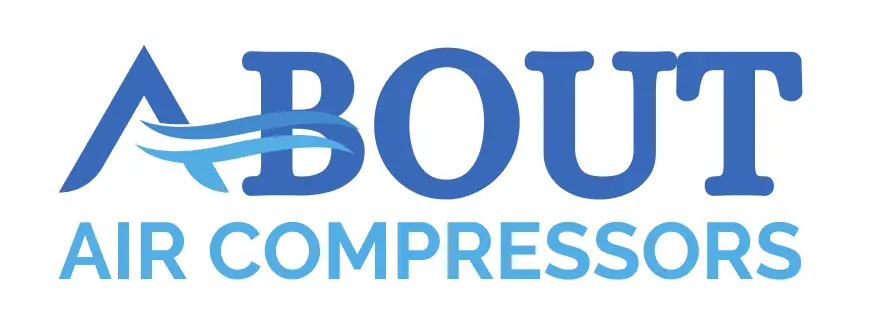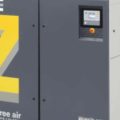Hey! This site is reader-supported and we earn commissions if you purchase products from retailers after clicking on a link from our site.
In recent years, manufacturers have looked at ways for service crews typically on construction sites to get compressed air where and when they need it, without constantly having to haul around an expensive tow-behind air compressor. In steps the PTO driven air compressor. This article will provide you with all the relevant information on PTO compressors and exactly what they are!
Table of Contents
- What is a PTO Driven Air Compressor?
- What Vehicles are Compatible with PTO Driven Air Compressors?
- PTO Air Compressor Buying Guide
- PTO Air Compressors vs Tow-Behind Air Compressors
- FAQs (Frequently Asked Questions)
What is a PTO Driven Air Compressor?
PTO driven air compressors are air compressors that are mounted under the deck of a vehicle and are powered by the PTO, power take-off, of a vehicle. By utilizing the truck’s engine for power, some systems may be capable of providing up to 1000 CFM of extraordinary airpower, AC power, hydraulics, or even a combination of all three. But in most cases, you will get around 50 to 200 CFM.
PTO driven air compressors are usually remotely mounted to the air end via a shaft. The space around a transmission can be limited, and so it is possible to directly connect the PTO to an air end. The shaft in these compressors essentially acts as a connector or link between the PTO port and the air end which is mounted elsewhere on the truck.
PTO driven air compressors are typical of a rotary screw design. For more information on rotary screw air compressors visit our guide here!
The few problems here are the rotating components being exposed, the potential alignment issues from excessive wear and stresses acting on the shaft, or premature breakdown of the shaft. And so, VMAC Air used innovated to create a direct-mounted PTO air compressor where the air end is directly mounted to the transmission, neglecting the shafts requirement.
Now, because direct-mounted PTO air compressors have fewer moving parts, their lifespan increases, they produce less noise and become far more efficient.
What Vehicles are Compatible with PTO Driven Air Compressors?
Due to the sophisticated systems that are PTO driven air compressors, they are designed specifically for a certain number of vehicles. The good thing is, that they’re not limited to just a singular vehicle, and instead, these types of air compressors are designed to be integrated with some of the most commonly used diesel work trucks available. These trucks are:
- Ford F-range diesel trucks ranging from F-250 to F-750
- RAM diesel trucks ranging from 3500 to 5500
The PTO driven air compressor for service truck will be able to provide CFM ranging from 50 to 200. But, there are much bigger machines available that tend to be skid-mounted and provide up to and over the 1000 CFM mark. These bigger machines are built for drilling rigs and other industrial OEM applications. It’s also common to find a farm tractor PTO air compressor, as is shown in the YouTube demonstration below.
This tractor PTO driven air compressor is specifically made for use with tractors and won’t be suitable for other vehicles. The good thing though is that the manufacturers of a tractor PTO air compressor will design them for all brands and models of tractors.
Though, with all this being said, PTO driven air compressors are available in two kits setups which will typically depict what vehicles you can attach them to. The two setups are:
- Fully Engineered Systems
- General Installation Systems
But what sets them apart you might wonder? Well, engineered systems come in either a direct-mounted or remote-mounted setup while general installation systems are available only as remote-mounted options. Let’s take a look at both in more detail!
Fully Engineered Systems
Fully engineered systems are designed to work with specific vehicles and they arrive with detailed manuals on how to install them properly. The engineers who design these kits spend thousands upon thousands of hours designing the perfect system for each individual vehicle. Due to this, the installation process is relatively straightforward, as instructions are provided for every component right down to the bolts and screws.
General Installation Systems
General installation systems vary in that they’re available for a variety of vehicles and their installation instructions are not near as specific, more of a general guideline. It’s therefore down to the upfitter to use the guidelines and apply them to specific vehicles.
This can be extremely difficult to make sure that each component and accessories are in suitable positions, and so, it’s important to work with experienced PTO upfitters to ensure the job is done perfectly.
PTO Air Compressor Buying Guide
When looking to purchase a PTO air compressor, of course, you must consider whether you desire a fully engineered system or a general installation system. There are other things that you should keep in mind when comparing models and finding the perfect PTO air compressor for you.
All models minimize engine wear, reduce deck space and use rotary screw air end technology but let’s investigate the four things that set them apart:
- Ground Clearance
- Installation Duration
- Transfer Case Design
- Weight
Ground Clearance
An important thing to consider is the ground clearance of the PTO air compressor, ensuring that is doesn’t jeopardise the vehicles ability to get around. Some of the early PTO’s manufactured had very poor ground clearance and not every manufacturer has fixed this with updated designs so it really is something to look out for.
Installation Duration
The length of time it takes to install the PTO air compressor is another cost that must be included along with the initial purchase as the upfront costs. Of course, any upfitter will factor in the installation time when providing a quote.
A good idea is to calculate the costs before hand, to consider whether a more expensive PTO driven air compressor with a reduced installation time actually works out cheaper than a less expensive PTD driver air compressor, and a greater installation time.
Transfer Case Design
The problem with manufacturers updating heir designs to satisfy the ground clearance issue is that some manufacturers also believe it’s fine to heavily redesign the the vehicles transfer case to create necessary space for the PTO driven air compressor and its parts.
Due to this, the warranty may become void on not just the transfer case but other parts of the vehicle. Clever and more conventional manufactures recognise the significance of this problem and instead design their PTO air compressor to work with existing transfer cases.
Of course, this solution then becomes even more sophisticated, as you now need to engineer mounting kits aimed at each specific make and model of vehicle to suit the transfer case, but it prevents unnecessary warranty void and maintenance issues for the consumer.
Weight
Finally, the weight from the PTO air compressor to the PTO air compressor can vary significantly. The greater the weight, the greater the GVW and fuel consumption. The weights can vary from as low as 100-150 lbs to greater than 500lbs.
It’s important to find the lightest but the highest-quality system that can meet your air needs.
PTO Air Compressors vs Tow-Behind Air Compressors
Firstly, a PTO compressor is available at half the cost of an expensive tow-behind air compressor, which is usually enough to persuade companies to opt for them over their counterparts. PTO air compressor assemblies mount seamlessly out of sight and under the vehicle, leaving the vehicle’s towing hitch free for additional equipment to be towed and creating additional storage space on the truck bed.
PTO air compressors have few moving parts, no separate engine to maintain, and can be combined with hydraulic systems. Due to the fact they hold so many advantages and are relatively simple to install, which in itself will save a lot of labor hours that costs a lot of money, it’s no surprise that they are becoming the industry’s go-to air compressor.
FAQs (Frequently Asked Questions)
PTO air compressors use your truck’s existing PTO port on the transmission and so they use the same fuel as your truck, which results in a hassle-free solution for air-on-demand. The air compressor uses the power from the truck to power itself and complete its air compression process.
The PTO air compressor is integrated into the truck’s pre-existing systems and so, you don’t need to keep running out for fuel to top up the compressor or maintain the compressor in a special way. All you need to focus on is maintaining your truck as you should already and you’ll have air available whenever you need it.
If you have any questions regarding PTO air compressors, please leave a comment below, with a photo if applicable, so that someone can help you!





